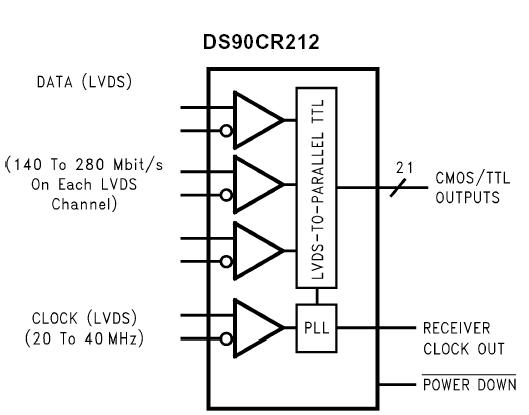DS90CR212: Features: ·Narrow bus reduces cable size and cost·±1V Common mode range (ground shifting)·290 mV swing LVDS data transmission·840 Mbit/s data throughput·Low swing differential current mode drivers r...
floor Price/Ceiling Price
- Part Number:
- DS90CR212
- Supply Ability:
- 5000
Price Break
- Qty
- 1~5000
- Unit Price
- Negotiable
- Processing time
- 15 Days
SeekIC Buyer Protection PLUS - newly updated for 2013!
- Escrow Protection.
- Guaranteed refunds.
- Secure payments.
- Learn more >>
Month Sales
268 Transactions
Payment Methods
All payment methods are secure and covered by SeekIC Buyer Protection PLUS.

 DS90CR212 Data Sheet
DS90CR212 Data Sheet







